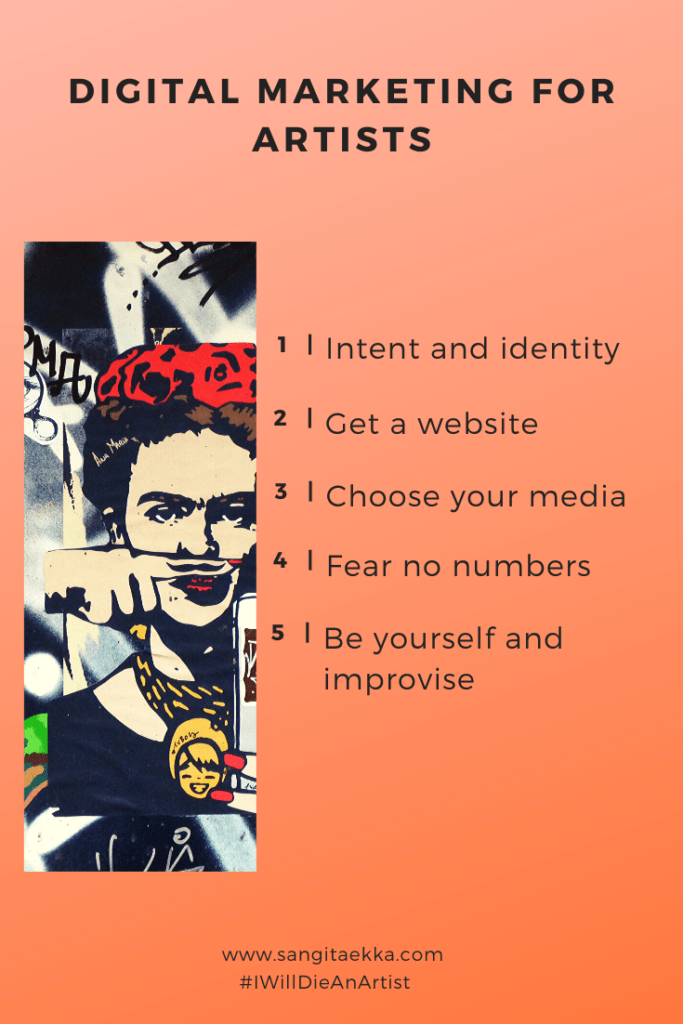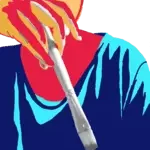[ Digital Marketing for Artists – Part 1 of Digital Marketing Series ]
My initial intuition for writing this blog was to make it a concluding piece for “Digital Marketing” series. I believe that I have gathered decent knowledge in content marketing and bits of digital marketing in my 6 years of experience so far.
With a mixed baggage of Android development, blogging, AI products based marketing communications, PR, event marketing, social media marketing, email marketing, report development from app data, and recently into Google tools, I believe I can answer and address the concerns of content and digital marketing queries I receive from friends and colleagues alike.
In future posts, I shall cover about the text and technology aspects of digital marketing and lay emphasis on blurring the line between the two. To me, both these aspects go hand in hand, and done well, yield good results.
Though the target audience for this blog are artists, any one who is new to marketing and testing the waters through website development, content flow or social media, may find this helpful. This is an absolute level 1 introductory blog.
Being a creative person myself, I am also connected with artists who employ different media to communicate their inner world. I often received queries on how daunting and confusing the whole digital marketing aspect is. I hope this and future blog posts will help. Read on.
Intent and identity
Before you start on anything, list out how you want to be identified as. Are you a 3D artist or do you sketch portraits? Do you make murals or dance or sing or are you a complete mixed bag?
This exercise helps you to abstract think your own identity and trust me, this lays a solid foundation for all your future efforts. Do you want more people to visit your website? Do you want to reach out to art curators? Do you want more people to follow you on your social media handles?
Know what you want. If you haven’t already watched Simon Sinek’s “Start With Why”, spare some time and make notes. A well defined intent gives you goals, and shapes your future decisions which are consistent with your identity. It ensures metrics are in place that define what success looks to you over a period of time.
Get a website
Most artists start by sharing their work over social media. It is easy. A few sign ups and your account is all set for uploads. However, a social media channel, though a powerful tool, is not the internet even when it may seem like converging the whole world for you.
While having a social media handle is useful, it also binds your digital existence with the existence of the platform.
This is where owning a website becomes necessary. It not only serves as a digital portfolio but gives you complete control on owning a small part of the internet.
You get to decide how you want to showcase your work, what information to put out, what services to integrate, and digitally exist, even if the social media channels die. Here are a few tips on owning a website:
-
Think through before you purchase a domain.
A good way is to get your name or your brand name followed by a .com. But of course, you are free to choose what appeals to you.
-
Figure out the information flow.
This becomes handy if you create multiple forms of art. Think what you want to portray on your homepage and how the site visitors would navigate through your content while browsing on mobiles.
-
Sell yourself. Subtly.
Give out some perky information about yourself in “About Me” section or share pictures of your achievements. If you can manage to get a few raised eyebrows, know that your audience will be interested in you and your future artworks.
-
Integrate a blog.
This gives your website a good SEO boost. Even if you don’t write frequently, occasionally sharing your experience is a good way to communicate with your audience.
-
Take good pictures.
Upload clear, good resolution pictures of your artwork. At the same time, avoid heavy image sizes. You are shooing away your audience if your website takes too long to load.
-
Create a mailing list.
Drop an automated thank you note for a new subscriber. Little things matter.
-
Link your social media handles.
And make sure they are not broken. Always link the media handles which you update frequently. Anyone arriving at your social handles shouldn’t see posts that were made months back, it gives off incentives to not follow the handles.
Choose your media
Choose social media and other platforms that would work best for you. You need not exist everywhere but whichever platforms you choose, you need to update it frequently.
Learn and understand the marketing term “engagement”. It is not how many people like or follow your social media handles, but how many of them actually interact with what you post.
If you have thousands of followers but you seldom make posts and very few people actually interact with them, you are in a bad spot. It’s the engagement rate that matters which keeps your audience hooked to your work and makes them want more.
Having said that, it is also important to keep your social channels have a good look and feel. Though, a part of it can be attained by graphical work, do not ignore the basic hygiene which plays a fundamental role in the overall health of your digital properties.
Here are a few tips on digital hygiene for your social media handles:
-
Display picture
It could a picture of you, your logo, or your initials. Since most social media image holders have turned circular, pick something which is easily visible and legible.
-
Cover pictures/banners
Unlike display pictures, cover pictures or banners are visible when an interested audience lands on your page. This is the first image they see before they scroll. Make it interesting. Drop your tagline, hashtags or details of upcoming events like workshops.
-
Business details
Ensure all your business details are in place. These include but are not limited to your website address, phone number, store address, price range, and any other details which can lead an audience to your website.
Fear no numbers
Internet is a great tool and it’s handy. Don’t fear to keep a track of how your website is performing. Google gives out free tools like Google Analytics and they are super easy to integrate.
Such tools give you detailed access to data about your audience. From basic demography to geographical presence to behavior, everything is wrapped in one dashboard.
You need not write complicated code, however one approach requires you to copy-paste the generated code in a section. But this is also doable via plugins.
This is a broad topic on its own which will be covered in future posts. Don’t shy away from using new technology.
Start small with something like Google Trends. The initial steps may look daunting but over the time they give you data backed results for decision making.
Be yourself and improvise
Artist or not, if the content you put out is inauthentic, internet can sniff it in no time. No tool can teach you to creatively use your well linked digital properties. It comes with trial and error.
Explore a new tool. Start with something like Canva and experiment with giving your social media handles or your website with some new graphics.
Improvise your art and your art marketing skills with time.
I hope this basic blog helped in getting clarity on where and how to start with digital marketing.
It’s is a very very basic blog and individual topics like blogs, email, social media, paid campaigns and tools will be covered in detail in future posts.
In conclusion, digital marketing for artists in a snapshot:

Next Post:

Best View i have ever seen !
Thank you so much! Glad it helped. 🙂